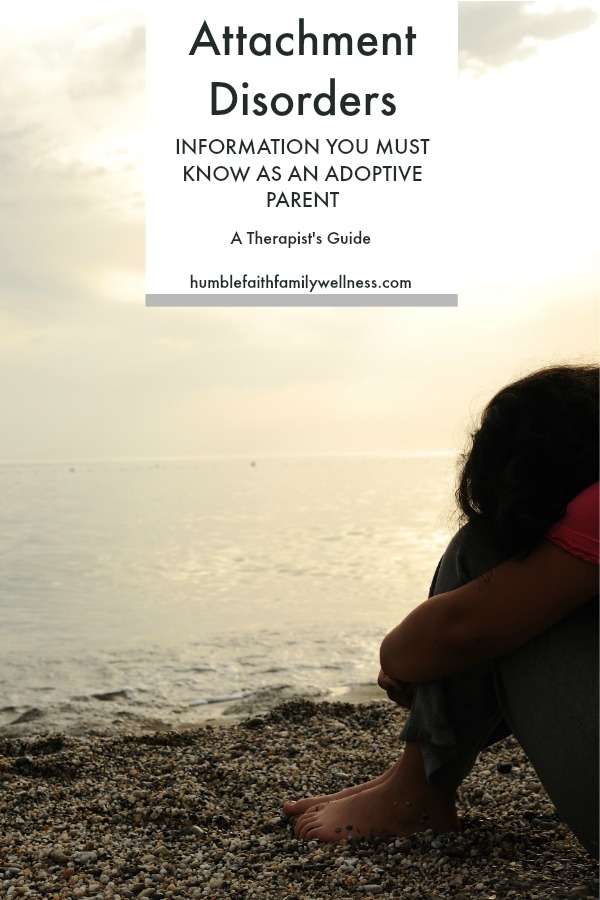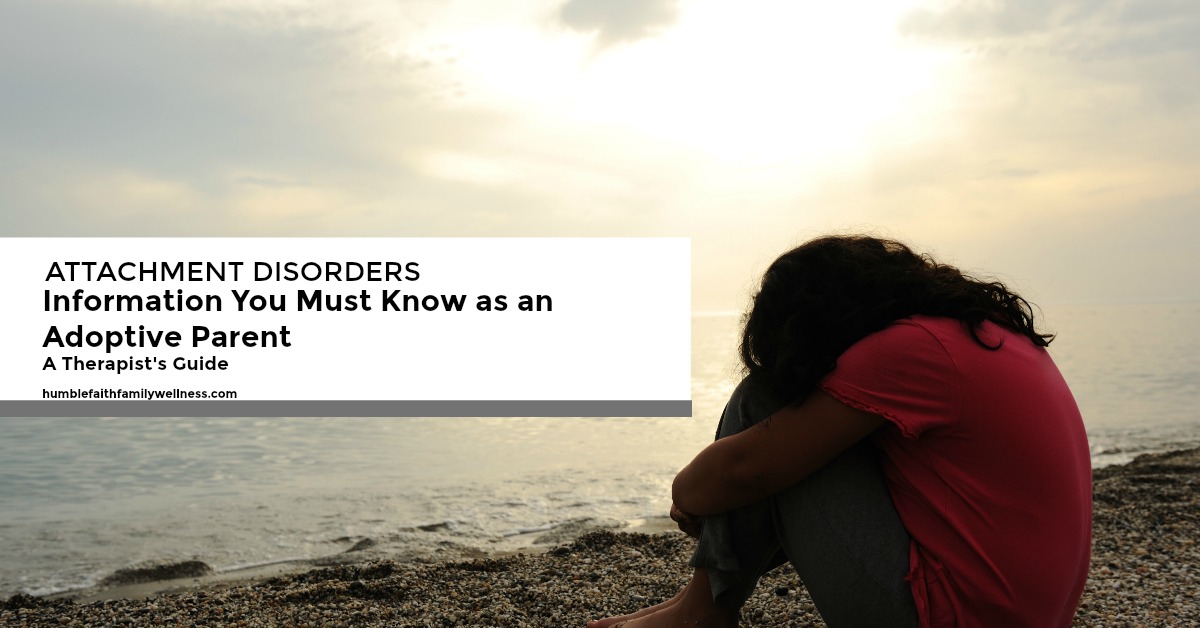
This post contains affiliates. This comes at no extra cost to you but does give me a small commission if you use them.
Information You Must Know as an Adoptive Parent – A Therapist’s Guide to Attachment Disorders
I am a Christian mental health therapist. Over the years I have worked with hundreds of adopted children and children who have been in the foster care system. It is a topic that God has placed near and dear to my heart!
It takes a special person and family to take in children and offer love and protection. I truly believe this is a calling from God for some individuals.
What I also have come to experience is there is not nearly enough information and training to help equip adoptive parents and foster parents to understand and help care for these children in the ways that they need.
Many children who are adopted or in the foster care system have attachment issues or a full attachment disorder. This is not a choice but rather how their brain has become wired to view the world.
What is attachment?
Attachment is the level of comfort and connection an individual has to another person. Everyone’s level of attachment is on a continuum. Meaning even in a good, loving, positive home, a child may have a higher level of attachment or connection to one parent over the other. We hear the terms daddy’s little girl or mommy’s boy and those are describing the slightly higher connection children have to parents. That is normal.
This is also true outside of the home. Some children have an easier time building attachment or connection to other children and/or adults. This sometimes is talked about as a person’s openness or guardedness to others. The concept of “making strange” for infants and toddlers comes to mind. This happens when babies inherently have a sense of insecurity when not with their mother or father. This again is normal and babies grow out of it because of secure attachment.
Attachment occurs primarily during the first four years of a person’s life. The brain is still developing in these areas. The meeting of a baby’s needs (shelter, food, diaper changes, and comfort) allows the baby’s brain to innately understand the world around him. This allows the baby to experience the world through the lens of “the world is safe” and “the world will provide”.
What is an attachment disorder?
An attachment disorder then can occur when a child’s needs were not met in their first four years of life. Or if there was great instability or inconsistency in the home or the level of care provided. For example multiple changes in foster placement. Chances of an attachment disorders increase if the infant or child experienced any abuse of neglect. There is also greater likelihood of attachment issues if the child was raised in an institution or orphanage where there is a high child to care giver ratios. This hinders a child from being able to form selective attachments.
If this happens, the baby’s brain comes to inherently understand the world through the lens of “the world is not safe” and “the world will not provide”. This child’s brain legitimately develops differently than a child who’s needs were consistently met.
There are two diagnoses for attachment disorders. Reactive attachment disorder and disinhibited social engagement disorder.
Reactive Attachment Disorder
A child with RAD rarely or minimally seeks or responds to comfort when distressed. So they are often unable to be soothed when upset. The child has limited positive emotions. They often struggle with social and emotional empathy to others. Children with RAD often have unexplained irritability, sadness, or fearfulness that are evident even during nonthreatening interactions with adult caregivers.
Disinhibited Social Engagement Disorder
A child with DSED shows pattern of behavior in which they actively approach and interact with unfamiliar adults. They often have poor physical boundaries. For example I have worked with young children who met me for the first time and they will try to hold my hand or sit on my lap. These children also rarely check to see where their caregiver is when venturing away, even in unfamiliar setting. Children with DSED also exhibit willingness to go off with an unfamiliar adult with little or no hesitation.
Everyday life with an attachment disorder
Children who have an attachment disorder view the world through the lens that it is not safe and will not provide for them. This can be seen in many ways of how the child interacts with the world around him.
- Love is skewed because it’s too abstract to understand
- A focus on tangible items
- A desire to collect or hoard inconsequential items
- Sneaking food
- Overeating or eating too quickly
- Present younger than chronological age
- Desire for control
- Lying
- Issues only in the home
Attachment disorders are not a choice!
I cannot stress this point enough! Your adoptive child is not choosing this behavior! (at least not completely) They also are not able to just “figure it out” or “change”. Again, we are talking about brain development. Your child also can’t be “fixed” because they are not broken. The road to healing is a long one that has many bumps, detours, and road blocks.
The therapy process includes both the child and the adoptive parents. And often in the the beginning it is only the parents who are able to make changes.
Don’t give up!
God did not intend for any child to have to endure a life that leads to an attachment disorder. At the same time, He brought your adoptive child into your home! Think of how much worse life would be if your child wasn’t in your home. You have been called to show your adoptive child what love and family are supposed to be like. Unconditionally.
Joshua 1:9 Be strong and courageous. Do not be afraid; do not be discouraged, for the LORD your God will be with you wherever you go.
Daniel Siegel, Peter Levine, and Bessel van der Kolk are three experts in attachment disorder and trauma who have spent their professional lives in understanding and helping children heal. I would highly recommend the following books for further information: The Developing Mind, Trauma Through a Child’s Eyes, and The Body Keeps the Score.
I sincerely hope this post has provided some information to help you seek further support and understanding for your child. For more in depth posts about attachment disorders check out When Love is Skewed and Parent according to Emotional Age not Chronological Age.
God Bless,
Melissa Gendreau

My sister adopted 4 kids, and most of them have this attachment disorder. She adopted them later in life. The youngest of the four was 9 years old, and she had already been harmed in so many ways that she has still never learned to trust anyone, even though she’s 18 now.
I’m so sorry to hear your niece is still struggling. It can sadly be a life long journey for them to experience healing and peace. People’s sins can have such horrendous effects on others. God Bless!
I am so glad to see you bringing this information to light. I recently read that adoption is warfare. It is exactly that…warfare for the life of another human being.
That is so true! And sadly the children don’t even understand what they are fighting against or for! Thank you for reading and commenting. God Bless!
I’ve never seen words put to this. Thanks for sharing such great information. We may experience adoption in our future (for grandchildren) and this is good to know. Thaks for sharing with such grace and sensitivity.
It is a very difficult topic because it is the potential result of people not caring for infants and children in the way God intended. Thank you for reading and commenting! God Bless!
I’m so thankful for posts like this! I love reading posts that are helpful to adoptees and adopters.
It is a topic that is dear to my heart. I have had the honor of helping hundreds of children who have struggled with attachment disorders. Thank you for reading and commenting! God Bless!
I have heard of attachment disorders, but this is the first time I’ve heard of the two different types and seen them so clearly explained. I work with children on a daily basis, many of whom exhibit many of these behaviors. This is so helpful to understand the deeper brain workings that are going on behind the scenes!
It unfortunately is not a topic that is often brought to light. I’m not sure that adoption agencies are as forth coming about this topic as they could/should be because of risk that people may not adopt if they understand all of the potential issues. Thank you for reading and commenting! God Bless!
Great to see you cover this here. We have two adopted daughters ourselves – one we got as an infant and the other at 22 months old. We definitely know what you are talking about here though we have dealt very minimally with this ourselves.
Praise God your daughters have not had to deal with the pain and hardship attachment issues can lead to! Thank you for reading and commenting. God Bless!
A dear friend of mine was a foster mom before adopting three of her foster children. I couldn’t agree more: it’s a calling. I don’t know that I have the strength to carry a change of through that journey. For some, it’s catastrophic what they’ve suffered. So…I pray and I love on the children and I’m their safe place when they want to spend the night out.
It is such a difficult process for so many children and families. My prayer is that more people understand attachment disorders so they can meet the kids where they are instead of believing the kids are just being “naughty”. Thank you for reading and helping to take care of God’s children in anyway you can! God Bless!
This is such a powerful post. It necessary information to help the parents help the children.
Thank you! It’s a topic that has been a God driven passion for me. God Bless!